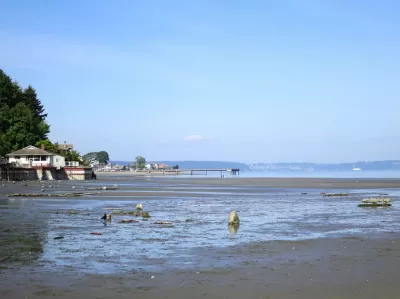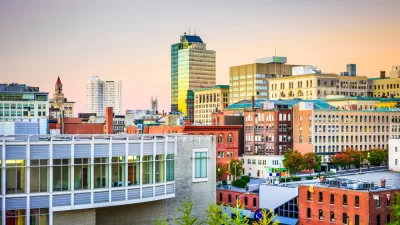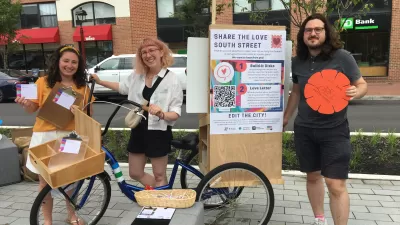The editors of the Tacoma Weekly speculate that someday governments might uphold their agreements. They don't expect the Tacoma Tideland sub area plan to be one of those times.

The Tacoma Weekly has printed a strongly worded editorial denouncing the engagement process for a new sub area plan for the Tacoma Tideflats. The editorial sets the stage:
The largest battle in the works on the waterfront pits the City of Tacoma against the Port of Tacoma over who will sit at the table during the creation of a sub area plan for the largely industrialized waterfront that not only is an economic engine of the region, but also a toxic sandbox caused by the industrialization of that very same land over the passing decades of unchecked capitalism and poor decision making in the name of “progress.”
The editorial's concern grows from efforts by the port to cut members of the Puyallup Tribe out of the planning process. According to the editorial, "a 1989-1990 land claim settlement between the city, the Port and the Puyallups requires that any discussion about developments or decisions regarding the Tideflats must include meaningful consultation with the tribe."
Yet, the "Port of Tacoma now wants to relegate that 'meaningful consultation' with the tribe to simply putting them among the ranks of business owners and commerce boosters with interests in growing the Tideflats. Such neglect of the tribe could put the whole process in "legal limbo," argues the editorial.
Environmental groups in the area are supporting a greater role for the tribe, and the big takeaway produced by the editorial is less than favorable about how much faith interest groups should put in the commitments made by government.
FULL STORY: Our view: When an agreement isn’t an agreement

Study: Maui’s Plan to Convert Vacation Rentals to Long-Term Housing Could Cause Nearly $1 Billion Economic Loss
The plan would reduce visitor accommodation by 25,% resulting in 1,900 jobs lost.

North Texas Transit Leaders Tout Benefits of TOD for Growing Region
At a summit focused on transit-oriented development, policymakers discussed how North Texas’ expanded light rail system can serve as a tool for economic growth.

Why Should We Subsidize Public Transportation?
Many public transit agencies face financial stress due to rising costs, declining fare revenue, and declining subsidies. Transit advocates must provide a strong business case for increasing public transit funding.

How to Make US Trains Faster
Changes to boarding platforms and a switch to electric trains could improve U.S. passenger rail service without the added cost of high-speed rail.

Columbia’s Revitalized ‘Loop’ Is a Hub for Local Entrepreneurs
A focus on small businesses is helping a commercial corridor in Columbia, Missouri thrive.

Invasive Insect Threatens Minnesota’s Ash Forests
The Emerald Ash Borer is a rapidly spreading invasive pest threatening Minnesota’s ash trees, and homeowners are encouraged to plant diverse replacement species, avoid moving ash firewood, and monitor for signs of infestation.
Urban Design for Planners 1: Software Tools
This six-course series explores essential urban design concepts using open source software and equips planners with the tools they need to participate fully in the urban design process.
Planning for Universal Design
Learn the tools for implementing Universal Design in planning regulations.
Ascent Environmental
Borough of Carlisle
Institute for Housing and Urban Development Studies (IHS)
City of Grandview
Harvard GSD Executive Education
Toledo-Lucas County Plan Commissions
Salt Lake City
NYU Wagner Graduate School of Public Service





























